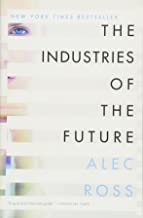More on this book
Community
Kindle Notes & Highlights
While the portion of global research and development (R&D) in the United States fell from 37 percent to 30 percent in the past decade, China’s share of global R&D increased from about 2 percent to 14.5 percent.
“What banks do—storing value, moving value, and pricing risk—those are all the functions of a data company. Google could, if they wanted to, do those three things better than most banks,” he says.
Three percent of the world’s population lived in cities in 1800. Today 54 percent of the world’s population lives in cities, and just 100 cities account for 30 percent of the world economy.
Everywhere political and economic systems face diverse but familiar problems: how to balance growth and stability in an era of rising inequality; how to prepare for the social and economic challenges that will come with the next wave of globalization and innovation; and how to become a base for that innovation and the corporate headquarters that will come from it, or at least to be in the supply chain for companies that are headquartered elsewhere.


